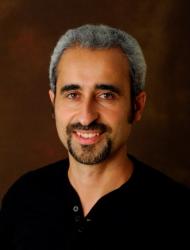New Semiconductor Architecture to Skyrocket EV and HEV Vehicle Performance and Range
By: Khaled Douzane
An Introduction to the revolutionary and industry first FPCU (Field Programmable Control Unit)
As you probably know, the automotive industry is amidst a digital and electric revolution. Much similar to the evolution from flip phones to smartphones, vehicles are becoming electrified, autonomous, and connected, transforming mobility as we know it forever. What you may not know is semiconductors inside these cars are becoming more and more valuable, as they are the key to enabling electric and hybrid vehicles to conserve power, charge faster and reach new ranges. The world’s top auto manufacturers are judged on these key factors and are in a race to find the best technologies to reach the farthest vehicle range with the least power consumption with the fastest battery charging time.
Seeking of new technologies
The answer to this challenge is extremely complex as it involves several elements within an electrified powertrain system. From the battery technology and electric motor design to the motor positioning, there are limitless combinations of technologies to use in electric powertrains, and we are not diving into that conversation as it would be a very long article. The key to this discussion is the ability to control these new systems efficiently together in harmony for maximum performance with new a semiconductor designed specifically for electric and hybrid powertrain systems.
Amazingly, no adequate solution to date has been offered by traditional semiconductor manufacturers to control these new systems efficiently. Therefore, Tier 1 manufacturers and OEMs are essentially forced to use limiting technologies like multicores and microcontrollers that were designed for gas powered engines. Because of this, Silicon Mobility has engineered a new semiconductor called the Field Programmable Control Unit (FPCU) that enables existing electric and hybrid vehicle technologies to achieve their true potential.
A Semiconductor that surpasses the limits
This new disruptive FPCU semiconductor technology combines a flexible and parallel hardware architecture that offers real-time processing and control of sensors and actuators, coupled with a standard CPU. This is surrounded and complemented with an integrated highest standard safety architecture (ASIL-D) to form a single semiconductor. The result is a far more powerful, flexible and safe architecture for the control and performance of electric and hybrid powertrains.

Source: Silicon Mobility’s demo at Embedded World 2018
The FPCU removes software bottlenecks and increases data processing over 40x faster than traditional semiconductors. The FPCU also enables up to 20x faster hard real-time control loop ensuring engine endurance and eliminating signal delays that can cause engine failure or damage. In addition, by executing complex algorithms in the FPCU hardware instead of software reduces power consumption significantly, reaching reductions of over 180 or 200 percent. This result of less power being consumed is an increased range of electric and hybrid vehicles. The FPCU has been measured to extend electric and hybrid vehicle range by over 32%!
Enabling the electric and hybrid revolution
By introducing the FPCU semiconductor, Silicon Mobility is helping automotive manufacturers and OEMs bring more efficient and custom designed electric and hybrid vehicles to market. Especially with the increased demand for extended vehicle range and increased data processing for autonomous driving, semiconductors like the FPCU are the key to achieving this without the need for rethinking or redesigning vehicle powertrain systems such as the battery or engine. Every top car manufacturer in the world is introducing at least one new electric or hybrid model in the next two years, and semiconductor solutions will be in extremely high demand. With the ability to increase vehicle range and data processing exponentially while reducing power consumption, semiconductor architecture is going to pave the way for electric and hybrid vehicle performance and range. Reason being, it is much less expensive to integrate new semiconductor architecture into existing powertrains than significantly alter powertrain system design and supply chains.
To learn more about Silicon Mobility’s FPCU called OLEA, please visit our website and learn about how this industry first semiconductor architecture can enable your electric and hybrid revolution.
Last year, GLOBALFOUNDRIES and Silicon Mobility successfully produced the industry’s first automotive FPCU solution. Most recently, Silicon Mobility successfully demonstrated its T222 chip at Embedded World 2018. This FPCU solution uses GF’s 55nm Low Power Extended (55LPx) automotive qualified technology platform to integrate multiple functions onto a single chip, boosting performance for hybrid and electric vehicles.
Watch a live demoof Silicon Mobility’s electric automotive motor control, enabled by GF’s 55nm eFlash technology.
About Author

Khaled Douzane
Khaled Douzane has 18 years of experience in the semiconductor industry with and automotive focus. As Silicon Mobility’s Vice President of Products, he is defining and driving all product lines for electric (EV) and hybrid (HEV) powertrain and autonomous vehicle applications. Khaled is a stakeholder in the patented technology design at the core of Silicon Mobilty’s innovative and revolutionary products. Prior to co-founding Silicon Mobility, Khaled contributed to the development of Scaleo, a semiconductor fabless company, where he held several roles, including SoC Desing Manager for eight years and Product Manager for an additional eight years. Khaled Douzane is a graduate of Nice Sophia-Antipolis POLYTECH engineering school with a major in Electronics.
 Delivering the promise of 5G demands optimized solutions. Source: GF
Delivering the promise of 5G demands optimized solutions. Source: GF






